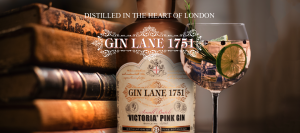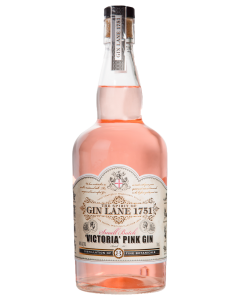Gin Lane 1751—Victoria Pink Gin
Michael Hepworth
By Doug Singer
HOLLYWOOD (Spiritsman) 8/19/20—Named after the Gin Act of 1751, 8th generation London distiller, Charles Maxwell of Thames Distillers, based in Clapham, London hit the nail on the head with this glorious creation.
On a Sunday evening, while my sister was visiting me on the Connecticut shore, we decided to dip our toes into this lovely pinkish hued Victorian-style gin. It gleans its pink coloring from the addition of bitters which harmoniously balances the flavors with exquisite results. The tradition of blending gin with bitters was first created by the British Royal Navy to balance out sweet and dry gins and to supposedly help cure sea sickness. Do you buy that crap? Sea sickness? It sounds to me like an excuse for a prescribed mid-day drink from the infirmary.
We decided to serve it over the rocks with only a splash of soda and a healthy squeeze of lime, keeping it simple and potent as we were ready to effectuate a serious buzz. Admittedly, we were both extremely impressed. There’s just something about gin on a steamy summer evening and this beautiful concoction was going down the hatch with unimpeded glory. It was in relatively short order that ice was clinking in preparation for seconds.
The Bloomsbury Club who is responsible for the four different gin selections available from Gin Lane 1751 are a group of gin lovers and drink industry professionals. Its name signifies an important historical landmark on the gin timeline which was in part brought about by artist William Hogarth’s iconic depiction of Gin Lane. The act banned the sale of gin in prisons, workhouses and shops selling everyday staples. Distillers were unable to sell gin directly to consumers and publicans were no longer allowed to issue credit to their thirsty, loyal customers. Come on now! A bar tab was a man’s right back in the day—really? Fuckin’ bastards! These are the things from which a revolution is born.
Back at the beach, we were rounding the bend of our third serving. We were significantly enjoying the results and my cheeks had developed a similar rosy-hue to the libation that was tantalizing my palate. Similar to the type of rosiness you might see in a colorized black and white portrait of that era. The speed of imbibing was escalating and it was not long before we were reminiscing about the past and waxing sentimental.
The Gin Act of 1751 made this spirit less readily available and more expensive, and with quality improving significantly; by Victorian times it had become “a drink of respectability.” But I am guessing that descriptive depended on just how wasted these Victorian elites hit the bottle, as alcohol does not discriminate. Considering the speed at which we were approaching inebriation, it is that not hard to imagine the bell-shaped skirts of that time becoming inverted and corsets hanging from the chandeliers.
Our spirits were certainly elevated and the expletives started to fly as round four brought it home with the sweet tears of beautiful memories and loved ones no longer able to share with us. We were seriously shit-faced and as my sister is a mere 115 pounds, she was most certainly engaging with her higher power as we were impressively powering through what had seemingly become an unplanned, albeit serious mission.This is a spirit imbued with a lot of history and one that is well balanced—well at least well-balanced enough to keep me on my feet and mixing cocktails as we managed to polish off the entire bottle that evening.
Although a great gin, to give it that extra layer of marketing bullshit, each bottle has been individually numbered and the gins are ‘handcrafted in small traditional pot stills.’ Victoria Pink Gin features eight natural botanicals—juniper, orris root, Seville oranges, angelica, Sicilian lemon, star anise, cassia bark and coriander—and most certainly creates a deeply complex gin. It was this joyous exploration of depth and complexity that turned our toe-dipping intentions into a truly deep dive and ultimately challenged the supposed respectability developed during the Victorian times.
This style gin may indeed have helped to cure sea sickness, but it didn’t prevent my sister from being on her knees hugging the porcelain and talking to the seals. Not the least bit deterred, I realized that viewing the ocean from my Connecticut home necessitated a sea sickness preventative of my own. So the very next day, I justified purchasing another bottle of this excellent gin.



